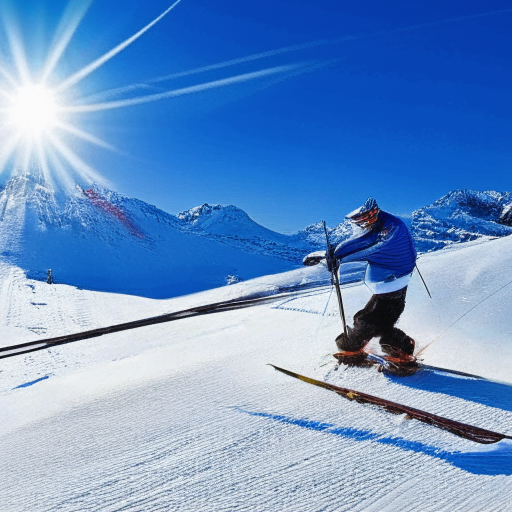Safeguard Your Eyesight: An In-Depth Exploration of Snow Blindness and How to Prevent It
As the enchanting winter season blankets the world in a stunning layer of white, it's crucial to recognize the potential hazards that accompany outdoor adventures in snowy terrains. One of the most serious risks is snow blindness, a painful yet temporary condition that arises from prolonged exposure to ultraviolet (UV) rays reflected off the snow. This comprehensive guide delves into the complex science behind snow blindness, examining the effects of sunlight on snowy landscapes while offering practical, actionable strategies for prevention, accurate diagnosis, and effective treatment options. By understanding the root causes of this condition and adopting protective measures, we can enjoy the splendor of winter while safeguarding our eye health.

Comprehending the Medical Definition and Origins of Snow Blindness
The medical designation for snow blindness is photokeratitis, describing a temporary injury to the cornea, the eye's outermost protective layer. This distressing condition primarily occurs due to excessive exposure to elevated levels of ultraviolet (UV) radiation, particularly those rays reflecting off snow-covered surfaces. The intensity of sunlight, especially at higher altitudes where the atmosphere is thinner, can lead to significant discomfort and, in some instances, lasting vision impairment. Although snow blindness usually resolves within a short timeframe, a comprehensive understanding of its origins is vital for implementing effective prevention and management techniques, thereby preserving your vision during winter activities.
Assessing the Impact of Sunlight on Snowy Environments and Visual Clarity
To grasp the complexities of snow blindness, it is essential to evaluate how sunlight interacts with snow's surface. Sunlight penetrates the atmosphere and encompasses a range of wavelengths, including the potentially damaging ultraviolet radiation. When these rays encounter a snow-covered landscape, the unique reflective qualities of snow can bounce back as much as 80% of these UV wavelengths, significantly increasing exposure levels. This enhanced reflection is especially pronounced in elevated regions, where the atmosphere's ability to filter UV radiation is reduced. Consequently, the eyes can quickly become overwhelmed by excessive UV exposure, leading to potential harm to the cornea, conjunctiva, and other vital ocular structures.
Spotting the Key Symptoms of Snow Blindness for Timely Action
The symptoms of snow blindness typically manifest several hours post-exposure to intense UV light. While the severity can differ among individuals, common symptoms include:
Eye discomfort and pain: Many people describe a gritty sensation or the feeling of having foreign particles in their eyes.
Redness and swelling: The eyes may appear bloodshot, and eyelids can swell, displaying signs of inflammation.
Watery eyes: Increased tearing occurs as the eyes try to flush out irritants and alleviate discomfort.
Blurry vision: Tasks requiring clear vision, such as reading or driving, can become difficult due to distortion.
Sensitivity to light: Enhanced light sensitivity, known as photophobia, often accompanies headaches.
Sensation of halos: Some individuals may notice bright rings or halos around light sources, contributing to visual confusion.
Implementing Effective Strategies to Prevent Snow Blindness and Protect Your Eyes
When it comes to defending your eyes against the harmful effects of UV radiation, prevention is invariably more effective than treatment. Here are several practical and actionable tips to help you minimize the risk of snow blindness:
Wear appropriate eyewear: Always opt for goggles or sunglasses that provide 100% UV protection when venturing into snowy environments. Look for eyewear labeled with UV400 or 100% UV protection for maximum safety.
Select wraparound styles: Choose sunglasses or goggles that wrap around the sides of your face to ensure comprehensive protection against both direct sunlight and side UV exposure.
Utilize wide-brimmed hats: Hats featuring wide brims or neck flaps can provide additional shade, significantly reducing UV radiation exposure to your eyes.
Check the UV Index: Before engaging in outdoor activities, consult the local UV Index, which predicts daily UV exposure levels. Be vigilant about limiting sun exposure during peak hours, typically between 10 AM and 4 PM.
Apply sunscreen: While it may seem unrelated, applying sunscreen around your face and eyes can significantly lower UV radiation exposure, enhancing your overall protection.
Take breaks indoors: If you plan to spend extended periods in snowy areas, make it a habit to take regular breaks indoors. This practice allows your eyes to rest and recover from bright light exposure.
Finding Relief and Recovery Techniques for Snow Blindness Symptoms
If you experience symptoms of snow blindness despite taking preventive measures, several effective strategies can help alleviate discomfort and promote recovery:
Seek shade: Immediately retreat to a darkened area or indoors to protect your eyes from further UV exposure.
Remove contact lenses: If you wear contact lenses, take them out to prevent additional irritation and facilitate recovery.
Apply cold compresses: Gently placing a cold, damp towel over closed eyes can effectively soothe discomfort and reduce swelling.
Use artificial tears: Over-the-counter artificial tears can provide temporary relief by keeping your eyes lubricated and alleviating dryness caused by snow blindness.
Avoid bright lights: Limit exposure to intense light sources, including screens and overhead lights, to lessen the impact of photophobia during recovery.
Rest your eyes: Engage in minimal visual strain activities, avoiding reading or screen time, to give your eyes the essential time they need to heal.
Knowing When to Seek Professional Medical Help for Snow Blindness
In most instances, symptoms of snow blindness will begin to subside within 24 to 48 hours as the cornea starts to heal. However, it is crucial to seek medical attention if symptoms worsen or persist, as delays in treatment could lead to complications or secondary infections. Recognizing when to take action can be vital in preventing further damage to your vision.
Experiencing snow blindness can significantly detract from the enjoyment of winter activities, but with the right knowledge and precautionary measures, we can greatly reduce the risk while relishing in the beauty of snowy landscapes. Stay informed about UV radiation levels, take regular breaks in shaded areas, and always wear protective eyewear. If you experience any symptoms, seek relief promptly and consult a healthcare professional if necessary. By prioritizing eye safety, you can fully immerse yourself in the winter wonderland and create cherished memories without compromising your vision. Enjoy your adventures with caution!
The post Snow Blindness: Understanding Its Causes and Effects appeared first on Survival Bite.
The Article Snow Blindness Causes and Effects Explained Was Found On https://limitsofstrategy.com


This post really resonates with me, especially as someone who loves winter sports. I vividly remember my first time skiing in bright sunlight and how unprepared I was for the glare off the snow, despite my enthusiasm for the slopes! It’s a stark reminder of how essential it is to prioritize eye protection during outdoor activities.
This topic on snow blindness resonates deeply with me, especially since winter activities have always been a cherished part of my life. Growing up in a region where snow blankets the landscape for months, I’ve seen firsthand the joy it brings—snowboarding with friends, building snowmen, or simply enjoying nature’s beauty. However, I had a close encounter with snow blindness a few seasons ago while skiing, which genuinely opened my eyes to the complexities of this condition.
I really appreciate how your post shines a light on snow blindness, as it’s a topic that often gets overshadowed by the beauty of winter itself. Having spent many winters hiking and skiing through snowy landscapes, I remember the first time I experienced that piercing glare from the sun reflecting off the snow—it was painful, and I didn’t fully understand what was happening. It really caught me off guard.